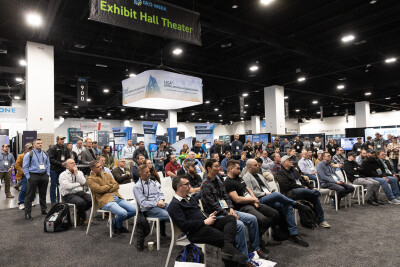Flandria Hotel by Pointfuse on Sketchfab
Cover thumbnail source: Gerpho on Sketchfab
Sketchfab calls itself “the leading platform to publish and find the best 3D content, anywhere online.” It’s quickly becoming the best place to host simple 3D models–just like YouTube is for video, SoundCloud is for music, and Instagram is for photos. It’s great for the general public, but what can it do for the 3D professional? What’s in it for designers, scanning providers, architects, and asset owners?
To answer this question, I asked Mark Senior, VP of Business Development at Arithmetica. His company has recently adopted Sketchfab for sharing their 3D models, and he explained what enticed them to use the platform.
First, a little background on Pointfuse: The program was developed to convert point clouds into lightweight 3D models that would be smaller, quicker to generate, and easier to use. With all that accomplished, Senior began to ask people what they were doing with the models. He learned that customers had started loading them into the Unity game engine and hooking them up to VR headsets. This convinced Senior to look for other creative ways to share the models.
“I’d seen Sketchfab earlier,” Senior said, “and I could really see an application for using it. For us, it was a good way to display and share and give people the ability to view 3D models quite quickly and easily, as well as make them downloadable.”
With Sketchfab, models generated using a modeling application like Pointfuse can be easily shared to cell phones, tablets, and computers. You can put 3D models in articles (like this one), you can post them to Facebook or easily load them up on a VR headset like the Oculus Rift. Sketchfab a pre-existing distribution network that makes it easy to spread 3D content.
Church – Textured Model from Point Cloud Data by Pointfuse on Sketchfab
But why focus on making 3D data easy to share and download rather than making it more detailed, or loading it up with attributes and measurements? “There is this visualization element we’ve forgotten a little bit,” says Senior. “We’ve focused on the survey data side of it–the precision, the modeling, the feature extraction, the whole BIM world with extracting features, digitizing them, and then putting them in a BIM model. But there’s a level of visualization that has a much broader appeal than what we realized.”
The 3D information generated during professional projects will be appealing to a wider swath of the population than we had thought. To prove the point, Senior told me to imagine a survey company commissioned by an architecture firm. The firm scans the project and uses Pointfuse to create a quick, simple model before the full model is done rendering. “I think there’s no reason that model shouldn’t be in the public domain,” he says. “You might have a building facility that you want to visualize so you can share information with public groups that are interested in the development.”
In other words, think of Sketchfab as a way to share 3D data with people who are interested in a project, but don’t have the 3D expertise or software to manipulate a point cloud. Platforms like Sketchfab are going to be huge because they offer a good way to communicate with members of the public, or members of the board, or key decision makers. Having a quick, easy (and yes, robust) way to do this is only going to become more important as 3D becomes more mainstream and more people involved with projects start demanding 3D content.
“The main thing we’re trying to do now,” Senior explained, “is demonstrate to people that you can take a point cloud, convert it, then share it quite easily using facilities that are already there. A 3D model, like one created by Pointfuse, is something that that people can understand right away, and that’s quite a powerful tool in allowing different levels of people to engage more quickly with what you’re doing.”






